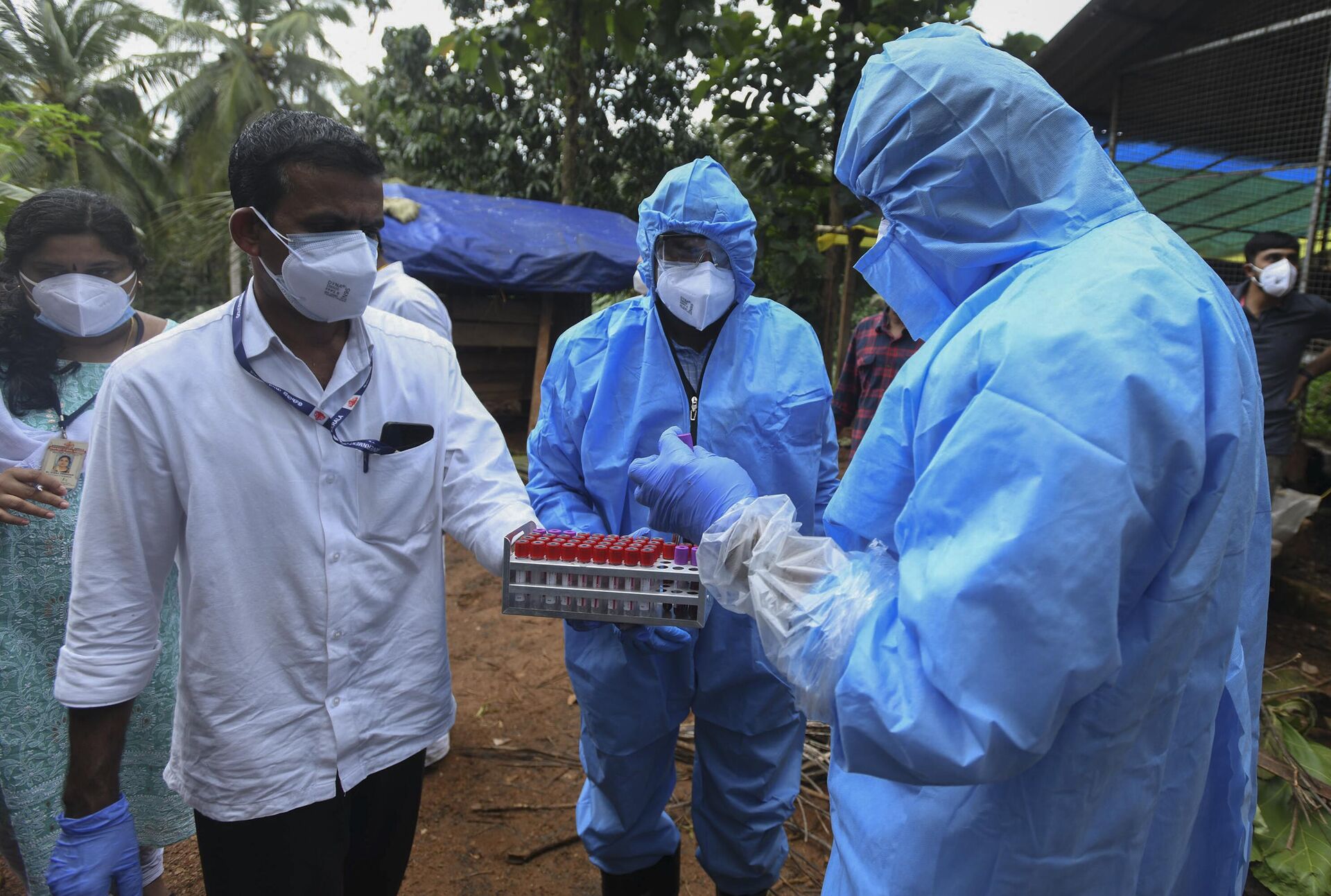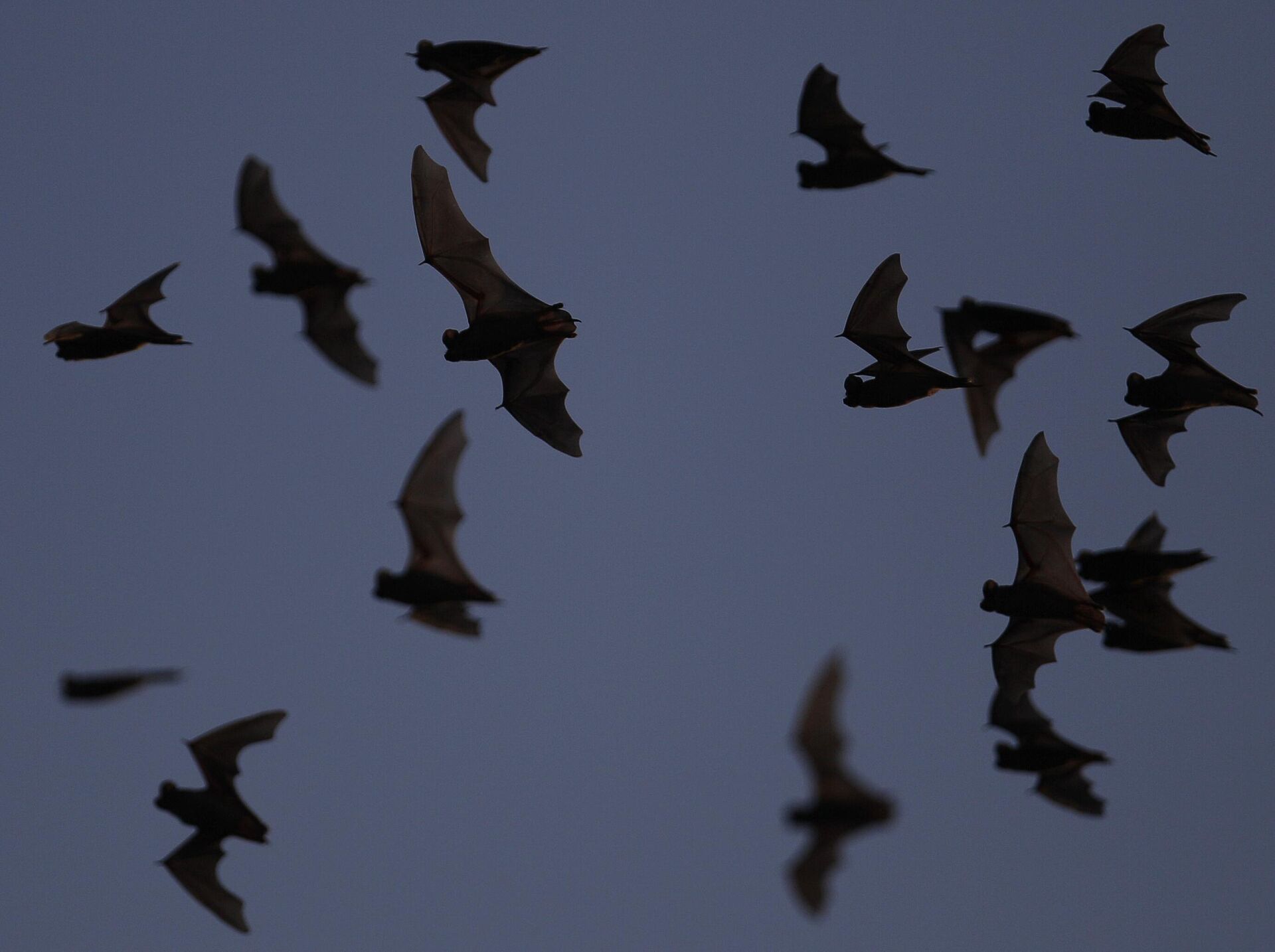Nipah Virus Outbreak: New Pandemic?
18:29 25.09.2023 (Updated: 10:10 29.09.2023)

© AP Photo / MARK BAKER
Subscribe
The Nipah virus has recently resurfaced in Kerala, India, causing concern among health authorities and the public alike. This zoonotic virus, which can be transmitted from animals to humans, has the potential to cause severe illness and even death.
In this article, we will delve into the origins, symptoms, transmission, and prevention of the Nipah virus, shedding light on the latest developments and providing valuable insights for understanding this deadly threat.
A Brief History of Nipah Virus Outbreaks
The Nipah virus was first identified in Malaysia in 1998, where it infected hundreds of people and resulted in a high mortality rate. Since then, several outbreaks have occurred in different parts of Asia, including Bangladesh, Singapore, and India. Kerala, a southern state in India, has been particularly prone to Nipah virus outbreaks, with multiple occurrences in the past two decades.
The most recent outbreak in Kerala, reported in September 2023, has raised concerns among health authorities and the general population. The virus has already claimed lives and led to the closure of schools, offices, and public transportation routes. Understanding the history of Nipah virus outbreaks is crucial in comprehending the severity of the situation and the urgent need for preventive measures.

Health workers collect blood samples from goats in the neighborhood for testing after a 12-year-old boy died of the Nipah virus in Kozhikode, Kerala state, India, Tuesday, Sept.7, 2021. T (AP Photo/Shijith. K)
© AP Photo / Shijith. K
Symptoms and Effects of Nipah Disease
Nipah disease manifests with a wide range of symptoms, which can vary from mild to severe. The initial signs include fever, headache, muscle pain, and respiratory distress. As the infection progresses, more severe symptoms such as encephalitis, neurological abnormalities, and acute respiratory distress syndrome (ARDS) may develop. The mortality rate associated with Nipah virus infection is alarmingly high, ranging from 45% to 75%.
It is important to note that Nipah virus can have long-term effects on survivors, including neurological deficits and cognitive impairments. The impact of this disease goes beyond the immediate threat it poses, highlighting the urgency of effective preventive measures.
Transmission and Reservoirs
The Nipah virus is primarily transmitted through direct contact with infected animals, particularly fruit bats of the Pteropus genus. These bats serve as natural reservoirs for the virus and shed it in their bodily fluids, including saliva, urine, and feces. Consumption of contaminated food, such as fruits or palm sap, can also lead to human infection.
In addition to bats, other potential intermediate hosts, such as pigs, have been identified in certain outbreaks. These animals can act as amplifiers, facilitating the transmission of the virus from bats to humans. It is crucial to understand the various modes of transmission and the role of different animal species in order to effectively prevent and control Nipah virus outbreaks.

People in protective suits prepare to cremate the body of a 12-year-old boy died of the Nipah virus in Kozhikode, Kerala state, India, Sunday, Sept.5, 2021. (AP Photo/Shijith. K)
© AP Photo / Shijith. K
Measures to Prevent Nipah Virus Infections
Given the severity and potential for rapid transmission of the Nipah virus, preventive measures are of utmost importance.
Here are some key strategies to mitigate the risk of infection:
Public Awareness and Education: Raising awareness about the virus, its symptoms, and preventive measures is crucial in controlling the spread of Nipah disease. Educating the public through mass media campaigns, community outreach programs, and school initiatives can help reduce the risk of transmission.
Enhanced Surveillance and Early Detection: Timely detection of Nipah virus cases is essential for effective containment. Strengthening surveillance systems, training healthcare professionals to identify and report potential cases, and implementing rapid diagnostic tests can significantly improve early detection and response.
Strict Infection Control Measures: Implementing rigorous infection control measures in healthcare settings is vital to prevent nosocomial transmission. This includes proper isolation of suspected cases, strict adherence to hand hygiene protocols, and appropriate use of personal protective equipment (PPE) by healthcare workers.
Safe Handling and Consumption of Food: Ensuring proper hygiene practices during food preparation, particularly when handling fruits and other raw ingredients, is crucial in preventing Nipah virus contamination. Educating farmers, food vendors, and consumers about safe practices can help minimize the risk of infection.
Vaccine Development and Research: The development of a safe and effective vaccine against the Nipah virus is a priority for global health organizations and researchers. Vaccination can play a crucial role in preventing future outbreaks and protecting vulnerable populations.

bats
© AP Photo / Eric Gay
Could Nipah Outbreak in Kerala Bring About Another Pandemic?
The recent Nipah virus outbreak in Kerala has sparked a renewed focus on research and preparedness. Scientists and healthcare professionals are closely monitoring the situation, conducting epidemiological studies, and working towards developing effective countermeasures.
While the current outbreak remains localized, the potential for the virus to spread beyond Kerala underscores the need for ongoing vigilance and proactive measures. International collaboration, information sharing, and investment in research and development are key to staying ahead of this deadly threat.
